Process Fish

How do I prepare a perfect grilled fish ?
Grilling fish is a delightful culinary experience that can be perfected with the right preparation and process. Here's a step-by-step guide to help you achieve perfection every time you fire up the grill for your favorite fish: 1. **Preparation** - **Choosing the Right Fish**: Opt for fresh fish, aim for fillets that are at least 1-inch thick, and choose types of fish like salmon, sea bass, and swordfish that are great for grilling due to their natural fat content. - **Marination**: Decide on the flavor profile you want, marinate the fish for at least 30 minutes to an hour in the refrigerator, but be cautious not to leave it too long as the acid in the marinade can start to cook the fish. - **Grill Prep**: Ensure your grill is clean to avoid any unwanted flavors and lightly oil the grates to prevent sticking. 2. **Grilling Process** - **Preheating the Grill**: Preheat the grill to medium-high heat, ideal temperature range between 375°F to 450°F (190°C to 230°C). - **Cooking the Fish**: Place the fish skin side down on the grill, flip the fish only once, and use a wide spatula to carefully flip and remove the fish without breaking it. - **Checking for Doneness**: The flesh should turn from translucent to opaque and give a gentle poke; it should flake easily with a fork. 3. **Serving Suggestions** - **Lemon Wedges**: Serve with wedges of lemon to add a fresh citrus note. - **Herb Sauce**: Pair with a simple herb sauce or compound butter. - **Side Dishes**: Consider serving with grilled vegetables, a fresh salad, or roasted potatoes. By following these steps, you will be able to prepare a perfect grilled fish that is sure to impress your guests or simply satisfy your own cravings for a delicious meal. Enjoy the process and savor the flavor!
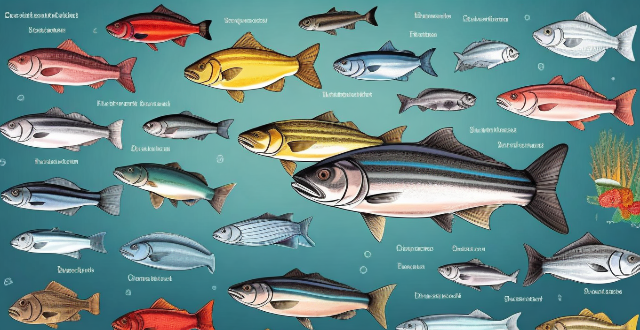
What are some tips for pan-searing a fillet of fish ?
The article provides a comprehensive guide on how to pan-sear a fillet of fish. It emphasizes the importance of choosing the right type of fish, seasoning it well, using the right cooking equipment, and following specific steps for optimal results. The tips include dry-seasoning the fish, adding enough oil to the pan, flipping the fish carefully, and allowing it to rest before serving.

How is ocean acidification due to carbon dioxide absorption affecting the health of fish stocks ?
**Ocean Acidification and Its Impact on Fish Stocks** The absorption of carbon dioxide (CO2) from the atmosphere into the ocean causes ocean acidification, leading to a decrease in pH levels and increased acidity. This phenomenon poses significant threats to marine life, particularly fish stocks, through various effects: 1. **Changes in Calcium Carbonate Availability:** As the ocean becomes more acidic, there is less calcium carbonate available for shell formation in many fish species, affecting their growth and survival, especially during early developmental stages. 2. **Altered Food Web Dynamics:** Acidification can cause changes in plankton communities, disrupting the food chain and affecting predator-prey relationships, potentially leading to overpredation or starvation among certain fish species. 3. **Behavioral Changes:** Increased acidity can interfere with sensory systems in fish, affecting their ability to find food, avoid predators, and navigate. It may also alter reproductive behavior, leading to reduced breeding success. 4. **Energy Allocation:** Acidification increases metabolic costs associated with maintaining physiological functions, reducing resources available for growth, reproduction, and other essential processes. It can also weaken the immune system, making fish more susceptible to diseases and parasites. Understanding these effects is crucial for developing strategies to mitigate the impacts of ocean acidification and protect marine ecosystems.
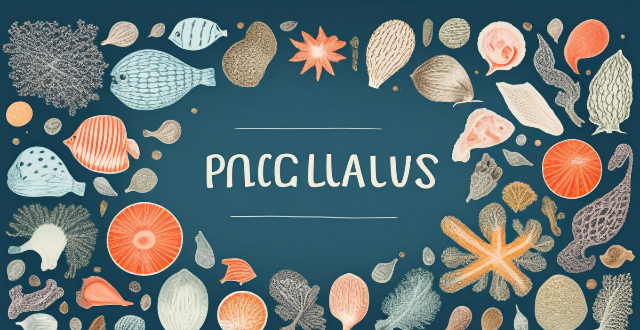
What kind of seasonings work well with different types of fish ?
This text provides a comprehensive guide to seasonings for various types of fish and shellfish, categorized by freshwater and saltwater species. It offers specific seasoning suggestions for each type of fish or shellfish, such as salmon, trout, catfish, tuna, mahi-mahi, sardines, anchovies, shrimp, lobster, crab, clams, mussels, and oysters. The suggested seasonings aim to enhance the natural flavors of the seafood while adding depth and complexity to the dishes.
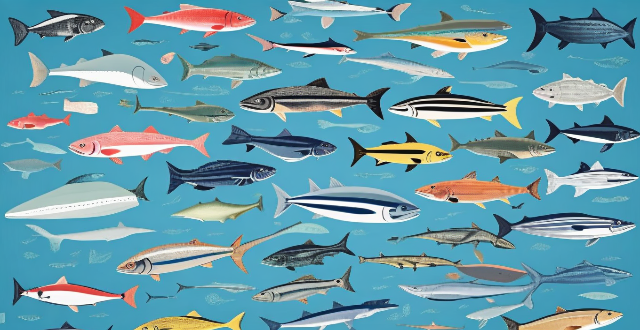
How do changing ocean temperatures influence fish migration patterns ?
This article explores how changing ocean temperatures influence fish migration patterns, affecting fish populations and the fishing industry. Water temperature plays a crucial role in fish metabolism, growth rates, reproduction, and survival, making it essential to understand its impact on migration patterns. Changing ocean temperatures can alter habitat conditions, food availability, cause physiological stress, and affect reproduction, leading to decreased abundance, shifting fishing grounds, economic losses, and ecosystem disruption. Monitoring ocean temperatures and adapting fishing practices are crucial for managing fish populations sustainably and mitigating the negative impacts of climate change on marine ecosystems.
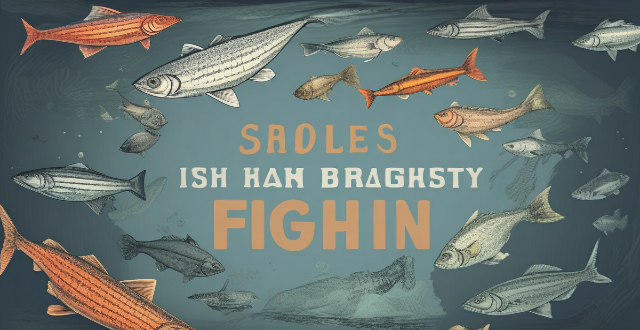
Is it safe to eat raw fish like sushi and ceviche at home ?
The text delves into the safety concerns of consuming raw fish at home, highlighting potential risks such as foodborne illnesses and toxin exposure. It then provides guidelines on selecting, handling, and preparing raw fish to minimize these risks. Despite these precautions, it emphasizes that complete risk elimination is impossible and advises enjoying raw fish responsibly.

How do I maintain objectivity during a self-assessment process ?
Self-assessment is a crucial process that helps individuals evaluate their skills, strengths, and weaknesses. However, it can be challenging to remain objective during this process. Here are some tips on how to maintain objectivity: 1. Set clear goals and criteria for evaluation. 2. Rely on data and evidence rather than personal feelings or biases. 3. Seek feedback from others who can offer an objective perspective. 4. Reflect on past experiences to identify patterns in behavior and performance. 5. Be honest with yourself about your abilities and limitations.

What is the process of returning a product in global shopping ?
### Summary: Returning a product purchased through global shopping involves several steps, including checking the return policy, initiating the return process, preparing and shipping the item back, monitoring your refund, documenting the process, and considering international factors such as customs and currency exchange rates. It's important to stay organized, use trackable shipping methods, and keep records of all communications with the seller to ensure a smooth and effective return.
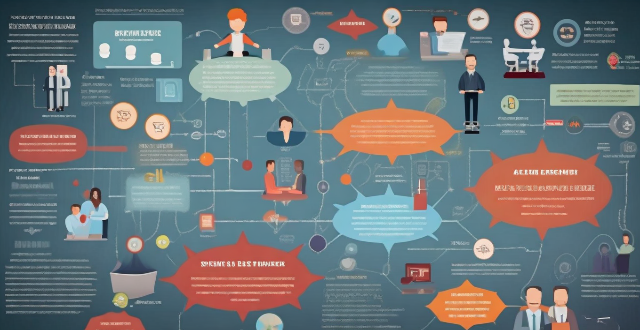
What is the role of an insurance broker in the buying process ?
Insurance brokers act as intermediaries between clients and insurers, guiding them through the buying process. They assess client needs, research policies from various insurers, provide expert advice, facilitate the application process, and offer ongoing support and service. Their expertise helps clients make informed decisions about their coverage needs.
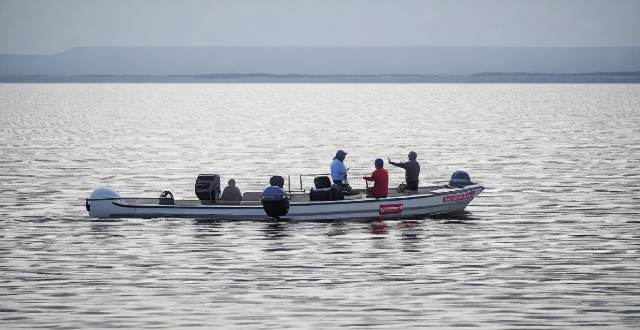
How does climate change affect the fishing industry ?
Climate change affects the fishing industry through changes in water temperature, ocean acidification, extreme weather events, changes in fisheries management policies, and economic impacts. These factors can lead to overfishing, reduced fish populations, damage to infrastructure and equipment, disruption of natural habitats, and decreased profitability for fishermen. To address these challenges, sustainable management practices and international cooperation are necessary to ensure the long-term viability of the fishing industry.
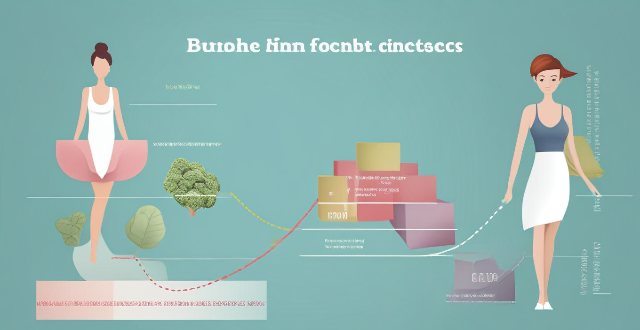
Can you explain the process of budgeting for non-profit organizations ?
The budgeting process for non-profit organizations involves several steps: setting goals, estimating revenue and expenses, creating a budget plan, monitoring and adjusting the budget throughout the year, and evaluating the budget at the end of the fiscal year. This process helps non-profits manage their finances effectively and make informed financial decisions that support their long-term success.

How can technology improve the process of climate information sharing ?
In this topic summary, we will discuss how technology can improve the process of climate information sharing. Technology has revolutionized the way we share and access information, including climate data. With advancements in technology, it is now easier than ever to collect, analyze, and disseminate climate information to a wide range of stakeholders. Data collection and analysis are crucial steps in the process of climate information sharing. Remote sensing, ground-based sensors, and data analysis software are some of the tools that can be used to collect and analyze climate data. These tools can help us monitor changes in climate patterns over time, identify trends and predict future climate events. Dissemination of climate information is another important step in the process. Online platforms, social media, and open data initiatives are some of the ways that climate information can be shared with researchers, policymakers, and the general public. These platforms can also offer interactive tools for visualizing and exploring the data. Collaboration and partnerships are also essential in improving the process of climate information sharing. Cloud-based collaboration tools, partnerships with tech companies, and crowdsourcing are some of the ways that researchers and stakeholders can work together on climate projects, sharing data and insights in real-time. In conclusion, technology plays a crucial role in improving the process of climate information sharing by enhancing data collection and analysis, facilitating the dissemination of climate information, and fostering collaboration among stakeholders. As technology continues to evolve, we can expect even more innovative solutions for addressing the challenges posed by climate change.

How does the claims process work after I've bought insurance ?
After purchasing insurance, understanding the claims process is crucial. The process typically involves documentation and preparation, filing a claim, assessment and investigation, approval or denial, receiving benefits, and considering deductibles/excesses and policy renewal impacts. It's important to gather evidence, notify your insurer, complete a claim form, provide necessary details, review the initial assessment, potentially undergo an investigation, receive approval or denial, arrange for payment, follow up as needed, pay any deductibles/excesses, and be aware of potential premium impacts at renewal. Refer to your policy documents for detailed instructions tailored to your insurance provider's processes.

How can I streamline my laundry process to be more productive ?
Streamlining your laundry process can save time and reduce stress. Here are some tips to help you be more productive with your laundry tasks: 1. **Preparation Phase**: - Gather all necessary laundry supplies like detergent, fabric softener, and stain removers. - Sort clothes by color and fabric type. - Establish a routine for doing laundry and use proper storage for dirty and clean clothes. 2. **Washing Cycle**: - Avoid overloading the washing machine and separate heavy items from delicates. - Choose the appropriate wash cycle based on soil levels and adjust water temperature for energy efficiency. 3. **Drying Process**: - Dry similar items together and clean the lint screen after every use to improve dryer efficiency. - Use timed drying to avoid overdrying and fold clothes immediately to prevent wrinkles. 4. **Organization and Maintenance**: - Fold or hang clothes immediately after drying to reduce wrinkling and put away clean clothes to avoid clutter. - Keep the laundry area clean by wiping down surfaces after each use and regularly cleaning the washing and drying machines. By implementing these steps, you can make your laundry process more efficient, saving time and effort in the long run.

Can you explain the process of credit analysis in credit management ?
Credit analysis is a crucial process in credit management that involves evaluating the creditworthiness of a borrower or a counterparty. The process includes gathering information on personal data, financial data, and credit history, analyzing this information through credit score analysis, financial statement analysis, and industry analysis, and determining creditworthiness based on capacity to repay, collateral, and covenant analysis. Finally, a decision is made on whether to extend credit to the borrower or not.
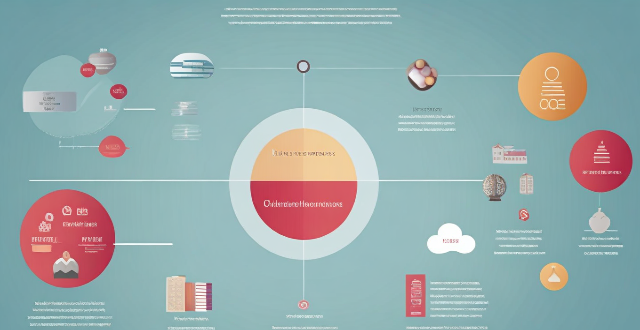
Can you explain the process of risk mitigation and its benefits ?
Risk mitigation is a crucial process for organizations to identify, assess, and reduce potential risks that could negatively impact their objectives. The process involves identifying all possible risks, assessing them based on likelihood and impact, prioritizing them, developing response plans, implementing controls, and continuously monitoring and reviewing strategies. Risk mitigation offers benefits such as improved decision making, enhanced reputation, reduced financial losses, increased resilience, compliance with regulations, and improved stakeholder trust. By effectively managing risks, organizations can navigate challenges more effectively and safeguard their future success.

How important is rest in the recovery process of a sports injury ?
The Importance of Rest in the Recovery Process of a Sports Injury Rest is crucial for healing, preventing further injury, reducing pain, and supporting mental health during recovery. Tips for proper rest include following doctor's orders, creating a comfortable environment, staying hydrated and nourished, getting enough sleep, and staying active (but safely).
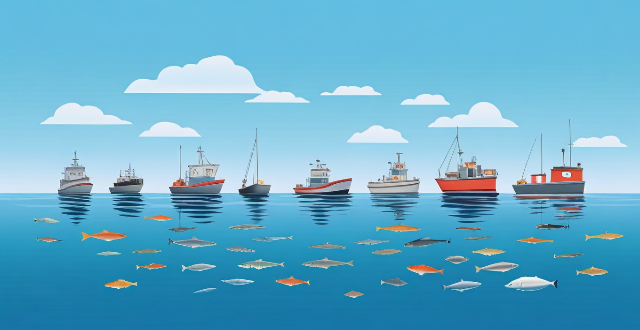
What role do climate models play in predicting future fishery yields ?
Climate models are essential for predicting future fishery yields by analyzing ocean conditions, projecting changes in fish population dynamics, and evaluating potential impacts on management strategies. They help identify shifts in habitats, migration patterns, growth rates, recruitment success, mortality rates, fishing quotas, spatial management needs, and diversification opportunities. This knowledge aids in developing resilient and adaptive approaches to ensure the long-term sustainability of fisheries resources amidst climate change.
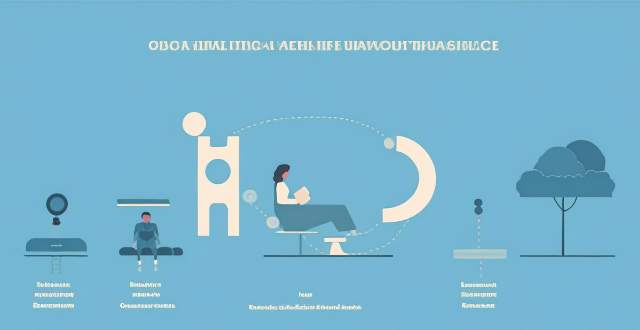
What is the process for obtaining approval from regulatory agencies for a new vaccine ?
The process for obtaining approval from regulatory agencies for a new vaccine includes pre-clinical trials, phase 1, 2, and 3 clinical trials, submission to regulatory agencies, and post-marketing surveillance. This process ensures that the vaccine is safe and effective before it is made available to the public.

What are the impacts of global warming on marine life and fish populations ?
The provided text discusses the impacts of global warming on marine life, particularly fish populations. It outlines how rising ocean temperatures alter habitats and affect metabolic rates; how ocean acidification disrupts calcification processes; how changes in currents and water circulation alter migration patterns and species ranges; the loss of coral reefs and its implications; the effects of extreme weather events on marine environments; and the challenges these changes present for resource management. The conclusion emphasizes the need for collective efforts to mitigate the effects of global warming on oceans.

How can I stay motivated and positive during the recovery process of a sports injury ?
Staying motivated and positive during the recovery process of a sports injury can be challenging, but it is essential for a successful comeback. Here are some tips on how to maintain your motivation and positivity: - Set realistic goals: Focus on small, achievable goals that you can accomplish daily or weekly, while keeping long-term goals in mind. - Stay positive: Use visualization techniques to imagine yourself successfully returning to your sport and performing at your best. Surround yourself with people who support and encourage you. - Stay active: Incorporate low-impact exercises into your routine, such as swimming or cycling, and attend regular physical therapy sessions to improve your strength and flexibility. - Educate yourself: Learn about your injury and the recovery process, and ask questions to your doctor or physical therapist. - Take care of your mental health: Practice mindfulness and meditation to reduce stress and anxiety, and seek professional help if needed. - Celebrate small victories: Acknowledge and celebrate progress along the way, and reward yourself for achieving short-term goals. By following these tips, you can make the most of your recovery journey and return to your sport stronger than ever.

What are the best techniques for cooking seafood ?
The article provides a summary of the best techniques for cooking seafood, which include poaching, grilling, steaming, and baking. Poaching is a gentle method of cooking seafood in a flavorful liquid such as water, broth or wine. Grilling is ideal for firm-fleshed fish like salmon or swordfish and adds flavor and texture to seafood. Steaming is a healthy way to cook seafood without adding extra fat and works well for fish fillets or shellfish like clams or mussels. Baking is a dry heat method that works well for thicker cuts of fish like cod or haddock. The article emphasizes the importance of paying attention to timing and temperature to avoid overcooking seafood.